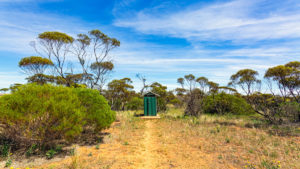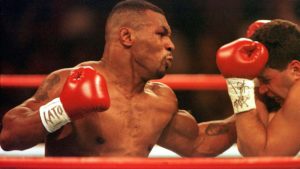So You Think You Can Drill? Why XRF and visual mineralisation don’t always add up to a discovery

XRF is no substitute for the real deal. Pic: Image Source/DigitalVision via Getty Images
- Portable XRF results, which provide real time estimates of mineralisation on site, are an important tool for geos in the field
- But often reports of XRF readings or visual mineralisation in drill core can send share prices of junior explorers running like Usain Bolt
- Exploration expert Jon Hronsky tells us why XRF needs to be taken with a pinch of salt
We all know the drill bit is the ultimate lie detector when it comes to mining and exploration.
But when is a drill result not a drill result?
Portable X-Ray Fluorescence technology has become a key part of the exploration geologist’s toolkit, a real time sampling tool used to identify areas of promise so drill program decisions can be made without waiting for assay results from a laboratory.
But ‘anomalous’ results and visual indications of mineralisation, especially for sulphide hosted base metals like nickel, copper and cobalt, are also being reported to the market, often resulting in short term spikes for companies who say they may be onto a major new discovery.
We spoke to exploration legend Dr Jon Hronsky, owner of consultancy Western Mining Services, about XRF, visual mineralisation, and why they are no substitute for assay results when it comes to a major discovery.
Not a proxy
Hronsky says the problem with pXRF is that while assay results can give you the mineral properties of a whole sample, XRF is limited in its scope.
“It’s true that when you’re dealing with nickel and copper mineralisation at significant levels, if you take a pXRF analysis of that, if it is mineralised, you’ll be able to record it,” he said.
“But it’s really important to understand that an individual XRF number is about the area of a 20c piece, right?”
It all boils down to a geological concept called the volume-variance relationship, says Hronsky.
“What it means is the smaller the sample you take the greater the variance, so the greater likelihood you’re going to get a higher value (or a) small value,” he said.
If it were economically feasible to sample an entire orebody, you’d be able to know the average grade of the whole thing.
As you get smaller and smaller, to the kind of sample size an XRF takes, the likelihood of an erroneous reading gets much greater.
“If that sample is biased, you’re going to get higher values that are not necessarily representative of the broader interval of the core,” Hronsky said.
“So that’s the main thing to look at. If the mineralisation is all relatively uniform — if you drill 10m of it, and they’ve gone down the core and sampled every half a metre, and the numbers are more or less the same, for nickel and copper and not for other things – it’s probably going to give you a reasonable indication.
“But it’s all about how representative those pXRF values are, remembering that it’s always a 20 cent coin.”
Dun to death?
The most recent example of the pXRF in action came from the tale of Dundas Mining (ASX:DUN), a junior explorer hunting for the next Nova in the same region where Sirius Resources made the famed nickel and copper discovery back in 2012, the Fraser Range.
There at the Central prospect, some 120km southwest of the now IGO (ASX:IGO) owned Nova mine, the young junior unexpectedly hit 20m of visual sulphide mineralisation in a 37m deep water bore hole.
Portable XRF readings picked up low grade cobalt, nickel, copper and silver, the company announced. Within two days its shares had climbed 250%.
The run extended a fortnight later when Dundas announced — with an appropriate disclaimer that visual mineralisation was not a proxy for assay results — that it had hit 358m of massive, semi-massive and disseminated sulphides in the first diamond hole at Central. Dundas shares hit an all time high of 86c.
But air escaped from that balloon a couple days later, when it was revealed the XRF results in the bore hole were, by and large, several times higher than the assays, particular with respect to cobalt mineralisation. Dundas said it was “encouraged” by the results. Its share price copped a hit regardless.
While results from the larger and far more important diamond hole are yet to arrive and we make no suggestion of any ill-thought or failure on their part, Dundas was quick to say it would no longer release numerical pXRF results to market.
“Dundas Minerals will continue to use the pXRF for its field work (mineral type/rock identification), as it is a very useful device for these purposes,” it said.
“The Company has however decided that in future it will not quote numerical pXRF reading results in its public announcements until it has a higher degree of confidence that for any pXRF reading announced, there is likely to be a strong correlation between the pXRF reading value and the future laboratory assay result.”
At 46c, Dundas shares are currently trading 253.11% up year to date, still a big gain for investors who got in at the IPO last year, but almost 50% down on their October 11 high.
In a similar vein, Cobre (ASX:CBE) shares rose 435% across August — hitting an all time high of 61c — the month after it announced “significant copper mineralisation” in drill core from its Ngami prospect in Botswana’s Kalahari Belt, near Sandfire Resources’ (ASX:SFR) Motheo development and the larger Khoemacau mine.
The announcement was based on visual estimates from hole NCP07, confirmed by pXRF readings, which included 59m of mineralisation including vein and fracture fill chrysocolla as well as fine-grained copper sulphides.
A number of similar follow up announcements came as drilling progressed. But when the first assay results landed on September 21, the market reacted coolly with a best hit in hole NCP08 of 10.7m at 1.3% Cu and 18 g/t Ag and in hole NCP07 of 11.0m at 0.5% Cu and 16 g/t Ag.
With drill rigs continuing to turn, plenty of core to test and $7m in the bank from an early August capital raising, the big break could yet come, but the motherlode does not appear to have been hit yet.
What to disclose?
So should companies not be disclosing things like XRF readings or visual copper mineralisation?
Director’s duties mean it is not that simple.
While it is not a perfect analogue for the current situation, there was a case many years ago in which an investor named Kim Riley sold his entire holding in Kerry Harmanis’ Jubilee Mines in the mid-1990s.
Jubilee, then a gold explorer, became aware of a small, uneconomic nickel intersection at the MacFarlane’s Find prospect mistakenly drilled by Western Mining Corporation from its neighbouring Mt Keith ground in September 1994. But it did not disclose the results to the market until two years later.
It subsequently found the Cosmos Nickel Complex, a discovery that eventually saw the company sold for $3.1 billion to global giant X-Strata, and made major shareholder Kerry Harmanis a rich-lister.
Jubilee was initially ordered to pay Riley out to the tune of $2m before winning on appeal.
For things like pXRF results, Hronsky says companies could be concerned about neglecting their continuous disclosure obligations, should they later make a major discovery that XRF or indications of visual mineralisation could have pointed to.
“You’ve got an obligation to inform the market, the case can easily be made, you’re a geologist, you had the pXRF results, you could see there was mineralisation there, you didn’t inform the market,” he said.
“And then if the share price runs for some reason, the ASX is down on you like a ton of bricks.”
Hronsky says in the case of XRF, directors are in some sense dealing with technology that has run ahead of regulatory guidelines, suggesting a JORC-type code (the compliance regime for mineral resource and reserve estimates) may be needed to frame their reporting on public markets.
Sugar hit
While things like visual mineralisation can temporarily excite investors hoping to latch on to a big new thing before it hits literal paydirt, Hronsky warns this can be a sugar hit.
If follow-up results don’t measure up to market expectations, the company reporting them could wind up back at square one.
Slow assay times currently being seen across the exploration industry don’t necessarily have an impact on whether the pXRF result gets reported to the market – whether it’s two weeks, six weeks or 12 weeks, Hronsky notes, the decision to report the XRF results or not will only take a few days.
But it could see elevated share prices linger for longer, giving juniors more time to raise capital to invest further in exploration.
Similar to the heuristic Hronsky sees around the word “high-grade” — which believe it or not is not always king in the mining game — Hronsky says any exploration announcement needs to be placed into context.
“The market looks at the high grade, responds to the high grade without doing the harder thinking about what does this mean in terms of context,” he said.
“When you’ve got a technology like rock chips, or a technology like pXRF, which can generate local grade out of context in sort of a biased sample, because we have this volume-variance relationship where we can take a small sample and get a higher number, you have the potential to mislead the market.”
Related Topics

UNLOCK INSIGHTS
Discover the untold stories of emerging ASX stocks.
Daily news and expert analysis, it's free to subscribe.
By proceeding, you confirm you understand that we handle personal information in accordance with our Privacy Policy.








